Abstract
Tennis performance activity is based very often on video analysis that gives specialists the opportunity to underline technical mistakes and possibilities to improve some strokes during the training sessions. With the new video technology, the tennis staff can grow the area of research and involve some other items to fulfil the holistic approach for tennis performance. This technology gathers video cameras with a feedback touch screen that can offer instant results for all kinds of training and game aspects. The feedback aspect is very important for players during the training session, because they can stop anytime and ask for an instant replay of the point. They can have an instant statistic or the instant image of the contact point of hitting or any other technical or tactical aspect that can be improved. PlaySight’s camera system is built with state-of-the-art tennis analytics technology that turns any court into a Smart Court, offering line calling, live streaming, instant multi-angle video replays and detailed statistics about every shot played. Each Smart Court is permanently equipped with an interactive touch-screen kiosk, plus six fully automated HD cameras. The system uses advanced image processing and analytical algorithms to capture and log stroke type, ball trajectory, speed and spin, in-depth shot data, player movement and more. PlaySight is approved by the International Tennis Federation (ITF) as a Player Analysis Technology and is approved for use in all ITF-sanctioned tournaments.
Keywords: Tennis performancevideo analysissports technology
Introduction
Video analysis is used by specialists because, together with the player, they can analyse technical mistakes, tactical problems or other tennis aspects and they have a feedback immediately. The literature presents some techniques and results on automatic analysis of tennis videos for the purpose of high level classification of tennis video segments to facilitate content-based retrieval (Sudhir, Lee, & Jain, 1997). Other approach is to propose a novel framework by combining the player action recognition with other multimodal features for semantic and tactics analysis of the broadcast tennis video (Guangyu et al., 2006). Video analysis is used for tennis coaching to develop all kinds of strokes (Underwood & McHeath, 1977) or to estimate what proportion of the total energy expenditure during the match is accounted for by aerobic and anaerobic metabolism, respectively (Balton, Hautier, & Eclache 2011). Also in the context of tennis game, the aim of video is to see the evolution of a game, described by key events as the ball hit, ball bounce, ball speed etc., and to detect these important events, the tracking of the tennis ball being essential (Yan et al., 2006). For this, a trajectory-based algorithm to detect and track the ball is presented (Xinguo et al., 2004).
Video analysis can be used like an interactive video simulation for improving the tennis player’s serve and return in a perceptual training session (Farrow et al., 1998).
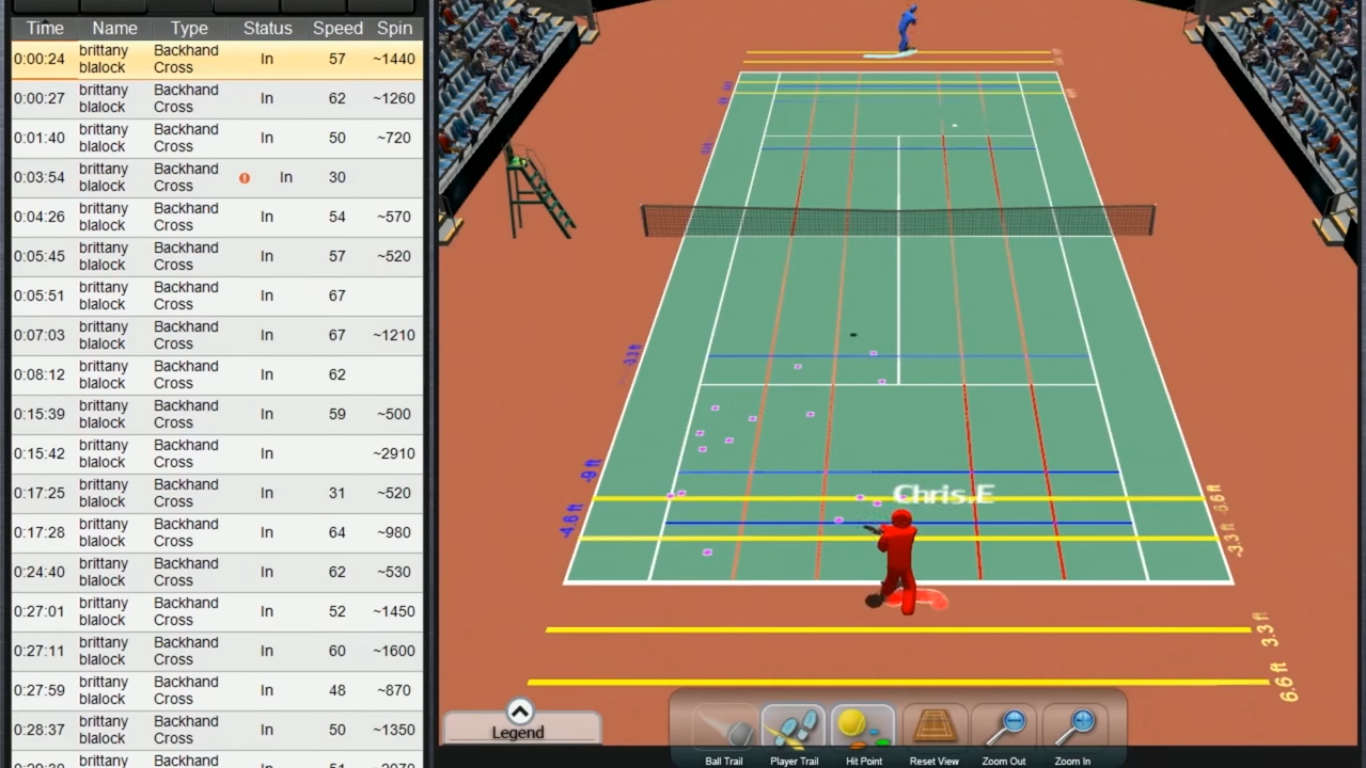
Problem Statement
-
Tennis performance has many electronic devices for helping specialists in their activity. Unfortunately, these devices are designed to record just the performance of one tennis player during the training sessions, because the device is fixed on the tennis player’s racket. The devices, as a shock absorber system or racket-integrated system, are made to record the information coming from the own racket, without analysing the effects of the hit, like if the ball goes out or if it has been efficiency in the battle with the opponent.
-
This PlaySight Smart Court Technology is developed to analyse each tennis player on the court and to present as fast as possible the information on the technical and tactical relations between the two players (Figure
01 ). Also through this system, coaches can organise any kind of on-court training sessions, and the device will help them fulfil the goals of the lessons.
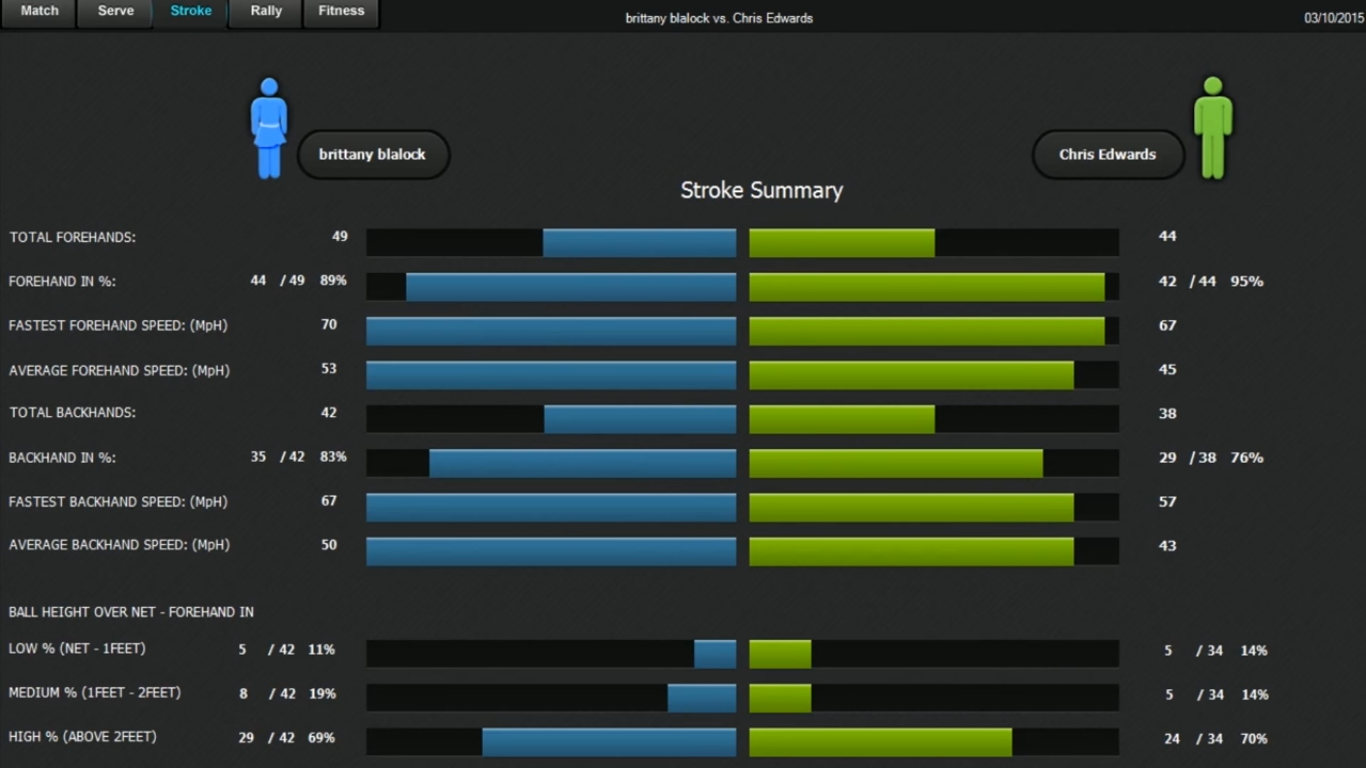
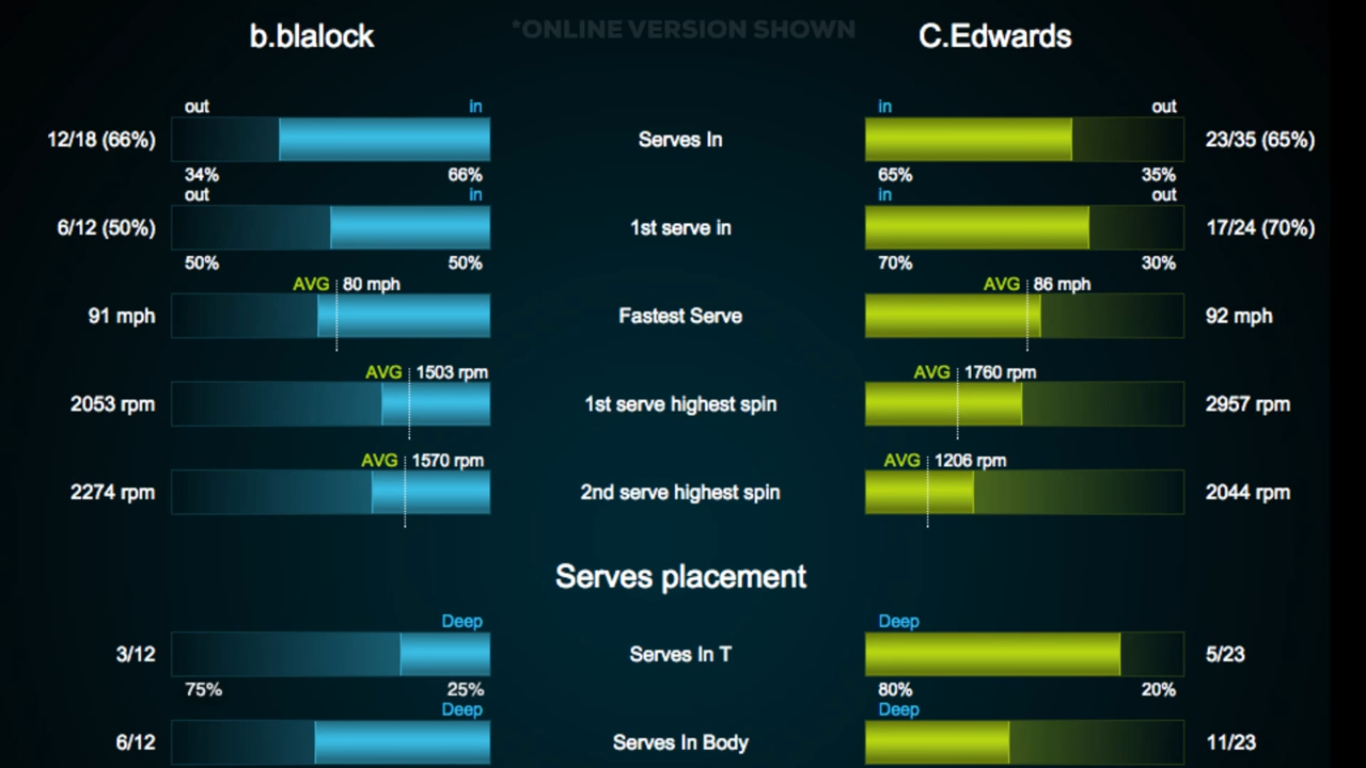
Research Questions
-
In which period of tennis training can this electronic technology be used?
-
What are the advantages of Smart Court Technology for tennis coaches?
-
What are the advantages of Smart Court Technology for tennis players?
Purpose of the Study
To prove that if tennis players use assisted training sessions based on the video analysis made by PlaySight Smart Court Technology, which provides feedback on different aspects of the tennis performance, their efficiency could increase in a short while.
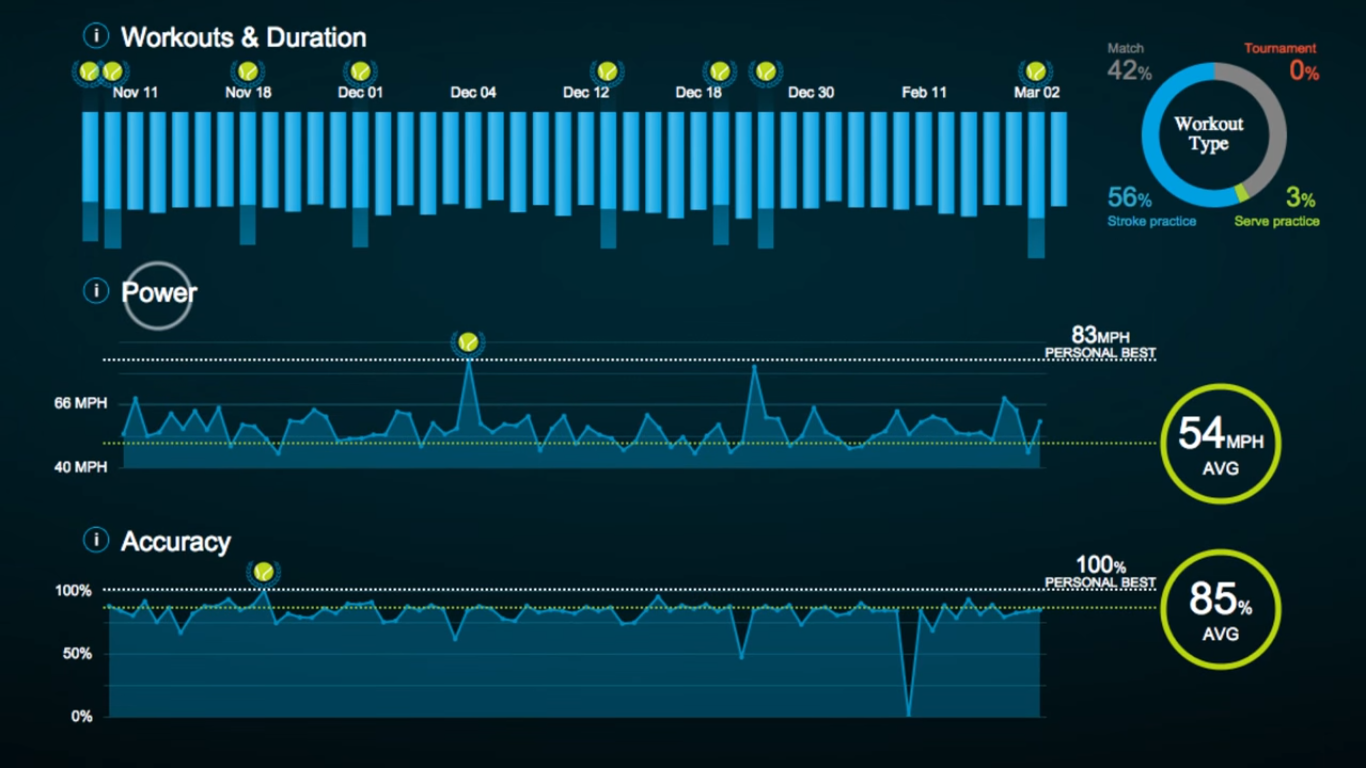
Research Methods
Video analysis method
We analyse technical aspects as forehands, backhands, serves, volleys, smash hits, drop shots, tactical practice as the fixed phase, alternative phase, cross court hits, triangle or chained triangles and also the foot work and physical aspects as burned calories and distance covered. The feedback of the system helped us for the accuracy of the study.
Observation method
By observation, we wanted to compare the system information with our data obtained from on-court training sessions. Our information was based on the accuracy of technical and tactical themes and the ball bouncing on the restricted area.
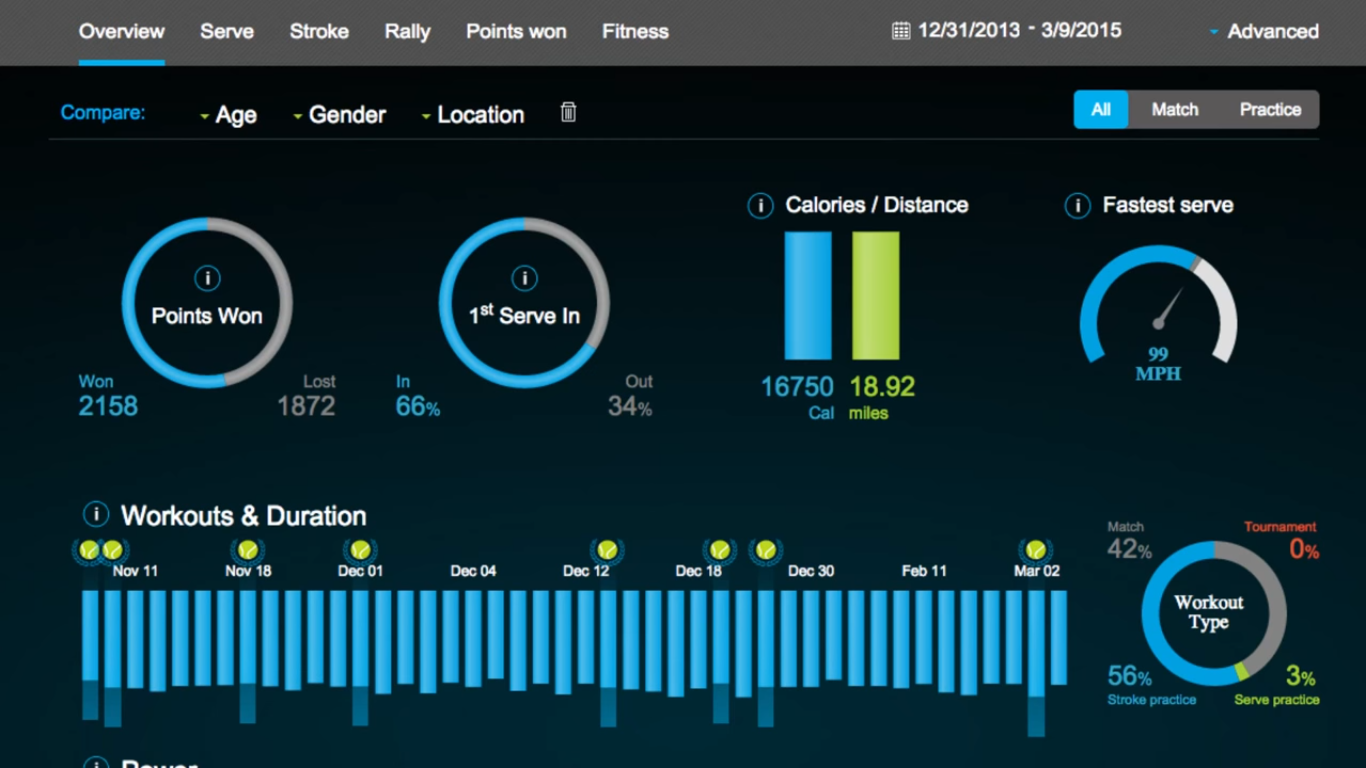
Findings
Technically, the system has the possibility to record and to analyse forehands, backhands, volleys, serves, drop shots, lobs and smash hits. (Figures
PlaySight Court Technology also analyses all tactical situations starting from the fixed phase and ending with the alternative phase: the fixed phase, with all kinds of strategies – serve and volley, serve-attack-volley; the alternative phase, starting from linear strategies to triangle and hourglass themes. (Figure
Also, the electronic system records and analyses all factors of efficiency (ball effect, direction, speed, length, height). (Figure
In physical terms, this device provides information on the running directions of the tennis player and the number of kilometres covered and calories burned in the training session or match session. (Figure
The main advantage for the tennis players is that they can practice and analyse in the same time on the court every aspect of training and to improve it as fast as they can.
The coach’s advantage is that, with this electronic system, they can focus more on important aspects like rhythm, timing, biomechanical clues and match strategies.
The disadvantage of PlaySight Smart Court system is its price, and most clubs cannot afford to buy this electronic equipment. It could also be a system for the Romanian Tennis Federation.
Conclusion
The PlaySight Smart Technology:
Can be used for tennis players in every period of training.
Covers all basic strokes and modern hits, such as the forehand inside out.
Can be adapted to any kind of technical, tactical and physical training.
Provides the fastest feedback on each factor involved in tennis analysis.
Can be the best referee during a test match.
Allows every coach to do the training session based on efficiency of tennis factors.
Can be used with the same efficiency on slow courts and fast courts.
Allows the coach to focus on other important aspects during the training sessions, not on counting the points or the mistakes.
References
- Balton, F., Hautier, C., & Eclache, J-P. (2011). Energy expenditure during tennis play: A preliminary video analysis and metabolic approach. J Strength Cond Res., 25(11), 3022-3028.
- Farrow, D., Chivers, P., Hardingham, C., & Sachse, S. (1998). The effect of video-based perceptual training on the tennis return of serve. International Journal of Sport Psychology, 29(3), 37-49.
- Guangyu, Z., Changsheng, X., Qingming, H., Wen, G., & Liauan X. (2006). Player action recognition in broadcast tennis video with applications to semantic analysis of sports game. Proceedings of the 14th ACM International Conference on Multimedia (pp. 431-440). Santa Barbara CA, USA, October 23-27.
- Sudhir, G., Lee, J. C. M., & Jain, A. K. (1997). Automatic classification of tennis video for high-level content-based retrieval. Retrieved from http://repository.ust.hk/ir/bitstream/1783.1-89/1/ tr9702.pdf
- Underwood, G., & McHeath, J. (1977). Video analysis in tennis coaching. British Journal of Physical Education, 8, 136-138.
- Xinguo, Y., Chern Horng, S., Wang, J. R., & Cheong, L. (2004). A trajectory-based ball detection and tracking algorithm in broadcast tennis video. Retrieved from https://www.researchgate.net/ publication/4137906_A_trajectory-based_ball_detection_and_tracking_algorithm_in_broadcast_ tennis_video
- Yan, F., Kostin, A., Christmas, W., & Kittler, J. (2006). A novel date Association algorithm object tracking in clutter with application to tennis video analysis. Retrieved from http://dl.acm.org/citation.cfm?id=1153542&preflayout=tabs
Copyright information

This work is licensed under a Creative Commons Attribution-NonCommercial-NoDerivatives 4.0 International License.
About this article
Publication Date
05 March 2018
Article Doi
eBook ISBN
978-1-80296-035-8
Publisher
Future Academy
Volume
36
Print ISBN (optional)
-
Edition Number
1st Edition
Pages
1-484
Subjects
Sports, sport science, physical education, health psychology
Cite this article as:
Stănescu, R. (2018). The Role of Video Analysis Method in Tennis Performance. In V. Grigore, M. Stanescu, & M. Paunescu (Eds.), Physical Education, Sport and Kinetotherapy - ICPESK 2017, vol 36. European Proceedings of Social and Behavioural Sciences (pp. 277-282). Future Academy. https://doi.org/10.15405/epsbs.2018.03.37

